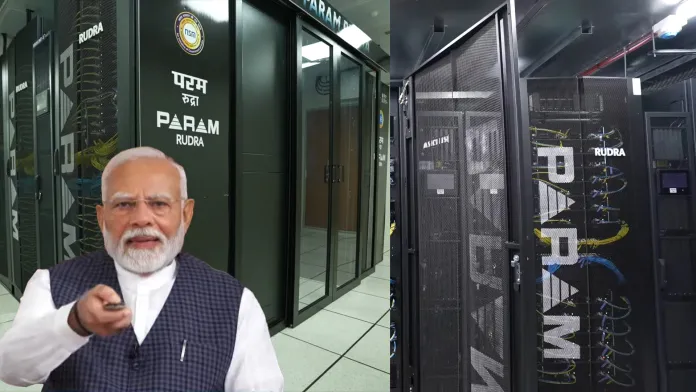Context:
Recently, Indian Prime Minister virtually launched Three Param Rudra Super Computing Systems and a High-Performance Computing (HPC) system for weather and climate research.
More on the news
- The PARAM Rudra Supercomputers were developed by the Centre for Development of Advanced Computing (C-DAC) under the National Supercomputing Mission (NSM).
The supercomputers are installed in:
- Pune (Giant Metre Radio Telescope – GMRT): Focuses on studying Fast Radio Bursts (FRBs) and other astronomical phenomena with a 1 petaflop capacity.
- Delhi (Inter-University Accelerator Centre – IUAC): Advances research in material science and atomic physics with the most powerful supercomputer at 3 petaflops.
- Kolkata (S.N. Bose Centre): Supports research in physics, cosmology, and earth sciences with a capacity of 838 teraflops.
- The computing power for weather research has also been enhanced with new High-Performance Computing (HPC) systems:
- Arka System at Indian Institute of Tropical Meteorology (IITM) in Pune: Offers 11.77 petaflops, improving the resolution of global weather prediction models from 12 km to 6 km.
- Arunika at National Center for Medium Range Weather Forecast (NCMRWF) in Noida: Provides 8.24 petaflops, which will enhance weather forecasts at block levels.
National Supercomputing Mission (NSM)
- The NSM is designed to enhance India’s supercomputing infrastructure in response to the growing demand from various sectors, including academia, research, MSMEs, and startups.
- It is jointly managed by the Department of Science and Technology (DST) and the Ministry of Electronics and IT (MeitY).
- It is implemented by the Centre for Development of Advanced Computing (C-DAC) in Pune and the Indian Institute of Science (IISc) in Bengaluru.
- Param Shivay, first indigenously assembled supercomputer under this mission was installed at IIT (BHU), followed by Param Shakti and Param Brahma at IIT-Kharagpur and IISER, Pune, respectively.
Significance
- Boosting Research and Development: Provide state-of-the-art technology to young scientists, helping India carve out new opportunities in science and technology.
- National Capability: Enhance India’s ability to handle research, economic growth, disaster management, and overall quality of life.
- Empowering the Youth: Enabling youth to engage in high-level scientific research and innovation.
- AI and Machine Learning: High-Performance Computing systems that will improve weather forecasting and climate research, allowing for more accurate predictions that benefit farmers and fishermen.
- Economic Growth and Self-Reliance: The government aims for India to lead in high-tech areas, moving from mere participation to leadership in global supercomputing and quantum computing.
- Global Competitiveness: The initiative positions India as a competitive player in the global market, ensuring that technological advancements translate into real-world benefits for the population.
Also Read:
Asian Development Bank (ADB): India’s GDP growth forecast at 7%

